All issues

Volume 46, Issue 8
Displaying 1-7 of 7 articles from this issue
- |<
- <
- 1
- >
- >|
-
[in Japanese]1972 Volume 46 Issue 8 Pages 273-279
Published: August 20, 1972
Released on J-STAGE: September 07, 2011
JOURNAL FREE ACCESSDownload PDF (1052K) -
Asao ITAGAKI, Fumiko GOBARA, Yoshihiro ITO, Koichi SAITO1972 Volume 46 Issue 8 Pages 280-289
Published: August 20, 1972
Released on J-STAGE: September 07, 2011
JOURNAL FREE ACCESSThis laboratory has been making effort to grasp the real state of enterovirus infections in the city population employing virological as well as serological means. And several reports have already been made by us along this line.
This report is mainly concerned with the isolation of enteroviruses and serological turnout in pediatric patients who visited local practitioners' officies or general hospitals in Matsue city between May 1969 and March 1971 and were diagnosed or suspected as acute enterovirus infections.
The results were summarized as follows:
1) Clinical diagnosis and virus isolation rate: aseptic meningitis (isolation rate of 49.2%); herpagina (46.2%); hand, foot and mouth disease (50%); tentative diagnosis of febrile disease (9.2%) tentative diagnosis of exanthematous disease (5.4%).
2) Materials and virus isolation rate: virus positive were 175 in number out of all 685 materials tested, the rate being 25.5% and its breakdown was-12 positive out of 188 cerebrospinal fluids; 67 out of 191 throat swabs; 1 out of 2 vesicular fluids; 95 out of 304 feces samples.
3) Type of isolated virus and its number: Coxsackie (Cox) A type 8 (6 in number); Cox A type 16 (69); Cox B type 3 (73); Cox B type 4 (2); poliovirus type 11 (6); poliovirus type 111 (10); untypable (9).
4) Seasons and ages and virus isolation rate: it was highest in June and July; the ages were mostly under 3.
5) We encountered in 1969 an epidemic which was thought to be due to enterovirus infections. Thereby, anti-Cox B type 3 antibody titer in patients' sera was measured by neutralization test and it was revealed that in all 18 cases tested the rise of the titer was significant. Thus, we convinced the causative was Cox B type 3. The trace of this epidemic could be detected even in the next year.
6) In the outbreak of hand, foot and mouth disease epidemic which occurred in 1970, 76 strains of Cox A type 16 were isolated out of 136 cases tested, using VERO cells of suckling mice. The kind of materials and positive rate were: in 139 cerebrospinal fluids, 63 strains (45.3%); 28 feces samples, 11 (39.3%); 3 vesicular fluids, 2 (66.7%). Our trial of combined use of VERO cells and suckling mice showed the possibility of raising the isolation rate.
7) Illness days and virus isolation rate in hand, foot and mouth disease: the rate highest within 4 illness days. It is of diagnostical importance. In one case, the virus was isolated in 27th illness day. It must be of epidemiological importance.
8) In about one third of sera samples obtained from children in 1968 and 1969, the antibody for Cox A type 16 was detectable. This gives rise to the speculation that the imbibition to the city population of this virus had already taken place some time before' the epidemic year 1970.
9) Frequent isolations of vaccine-originated poliovirus were seen in a short period after giving the live vaccines to the population. This would be easily explained. However, there encountered an another fact to be borne in mind that even in seasons other than above mentioned period, actually through the year round, the isolations of vaccine-originated polioviruses had been seen from the feces of the patients who were clinically diagnosed or suspected as aseptic meningitis, febrile disease or exanthematous disease. As of now, the possibility for this virus to play some role in such diseases can not be denied completely.View full abstractDownload PDF (1274K) -
[in Japanese]1972 Volume 46 Issue 8 Pages 290-295
Published: August 20, 1972
Released on J-STAGE: September 07, 2011
JOURNAL FREE ACCESSDownload PDF (740K) -
[in Japanese]1972 Volume 46 Issue 8 Pages 296-303
Published: August 20, 1972
Released on J-STAGE: September 07, 2011
JOURNAL FREE ACCESSDownload PDF (3016K) -
[in Japanese]1972 Volume 46 Issue 8 Pages 309-313
Published: August 20, 1972
Released on J-STAGE: September 07, 2011
JOURNAL FREE ACCESS -
1972 Volume 46 Issue 8 Pages 314-315
Published: August 20, 1972
Released on J-STAGE: September 07, 2011
JOURNAL FREE ACCESSDownload PDF (171K) -
1972 Volume 46 Issue 8 Pages 317-319
Published: August 20, 1972
Released on J-STAGE: September 07, 2011
JOURNAL FREE ACCESSDownload PDF (378K)
- |<
- <
- 1
- >
- >|